
Orvieto: The Jewel on the Tufa Cliffs
Explore Orvieto: A stunning Italian hilltop city with medieval charm, breathtaking views, and rich history, offering a unique blend of culture, nature, and culinary delights.
Orvieto is a beautiful city in the Umbria region of Italy, perched atop a dramatic tufa cliff. Known for its stunning views, medieval architecture, and rich history, it is a perfect destination for tourists seeking a unique Italian experience. The city offers a mix of cultural attractions, natural beauty, and delicious cuisine. The Duomo di Orvieto is the city's crown jewel. This magnificent cathedral, with its intricate façade and stunning frescoes, is a must-see. Wander through the narrow streets to discover charming piazzas, medieval buildings, and artisan shops. The underground city, with its labyrinth of tunnels and caves, offers a fascinating glimpse into Orvieto's past. Nature lovers will enjoy the sweeping views of the surrounding countryside and the opportunity to explore local vineyards and olive groves. The Orvieto Classico wine, produced in the region, is renowned for its quality. Do not miss the chance to sample local delicacies like wild boar and truffles at one of the city's many traditional restaurants.
Local tips in Orvieto
- Visit the Duomo di Orvieto early in the morning to avoid crowds and get the best light for photographs.
- Take a guided tour of the underground city for an in-depth look at Orvieto's fascinating history.
- Try the local Orvieto Classico wine at one of the city's charming enotecas.
- Wear comfortable shoes as the city is best explored on foot, with many cobblestone streets and steep pathways.
- Plan a visit to the nearby countryside to experience the region's vineyards and olive groves.
Orvieto: The Jewel on the Tufa Cliffs
Orvieto is a beautiful city in the Umbria region of Italy, perched atop a dramatic tufa cliff. Known for its stunning views, medieval architecture, and rich history, it is a perfect destination for tourists seeking a unique Italian experience. The city offers a mix of cultural attractions, natural beauty, and delicious cuisine. The Duomo di Orvieto is the city's crown jewel. This magnificent cathedral, with its intricate façade and stunning frescoes, is a must-see. Wander through the narrow streets to discover charming piazzas, medieval buildings, and artisan shops. The underground city, with its labyrinth of tunnels and caves, offers a fascinating glimpse into Orvieto's past. Nature lovers will enjoy the sweeping views of the surrounding countryside and the opportunity to explore local vineyards and olive groves. The Orvieto Classico wine, produced in the region, is renowned for its quality. Do not miss the chance to sample local delicacies like wild boar and truffles at one of the city's many traditional restaurants.
When is the best time to go to Orvieto?
Iconic landmarks you can’t miss
Duomo di Orvieto
Explore the Duomo di Orvieto, an architectural masterpiece showcasing Gothic art and history in the heart of Italy's charming town of Orvieto.

Pozzo di San Patrizio
Explore the stunning Pozzo di San Patrizio in Orvieto, an architectural gem with a rich history and breathtaking views.

Well of St. Patrick
Explore the Well of St. Patrick in Orvieto, a stunning historical landmark with a unique double helix staircase that offers a glimpse into Renaissance engineering.

Orvieto Underground
Uncover the rich history of Orvieto Underground, a captivating tourist attraction showcasing ancient tunnels and chambers beneath the stunning hilltop town.

Pozzo della Cava
Explore the depths of history at Pozzo della Cava, an archaeological museum in Orvieto, Italy, showcasing Etruscan civilization's fascinating artifacts.

Ristorante Grotte del Funaro Nuova Tourist
Discover authentic Italian flavors at Ristorante Grotte del Funaro, where traditional cuisine meets an enchanting cave-like ambiance in Orvieto.

Torre del Moro Orvieto
Discover breathtaking views and rich history at Torre del Moro, a must-see attraction in the enchanting city of Orvieto, Italy.
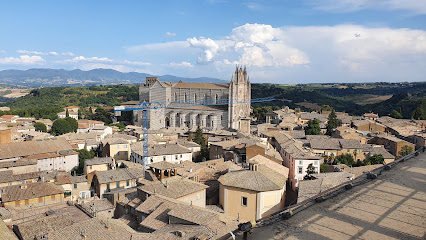
Orvieto Centro
Explore Orvieto Centro - a stunning hilltop town rich in history, culture, and delightful Italian cuisine, offering breathtaking views and unforgettable experiences.

Labirinto Di Adriano
Experience the fusion of exquisite dining and rich historical ambiance at Labirinto Di Adriano in Orvieto.

Chiesa di Sant'Andrea
Discover the Chiesa di Sant'Andrea in Orvieto - a stunning Catholic church showcasing exquisite architecture and deep spiritual heritage.

Altarocca Wine Resort
Discover the enchanting Altarocca Wine Resort, where luxury meets nature in Italy's breathtaking countryside, ideal for relaxation and indulgence.

Palazzo Del Capitano Del Popolo
Explore Palazzo Del Capitano Del Popolo, a stunning monument in Orvieto, Italy, rich in history and architectural beauty at the vibrant Piazza del Popolo.

Funicolare di Orvieto - Scalo
Ride the Funicolare di Orvieto for stunning views and easy access to the historic hilltop town, a must-see in Italy's beautiful Umbria region.

Duca di Orvieto
Experience authentic Italian cuisine at Duca di Orvieto, a charming restaurant in the historic heart of Orvieto offering a delightful menu and warm ambiance.

La Badia di Orvieto
Experience tranquility and elegance at La Badia di Orvieto, a historic hotel in the heart of Italy's stunning countryside, perfect for relaxation and exploration.

Unmissable attractions to see
Cascate del Mulino-Hot Spring
Discover the healing waters and stunning landscapes of Cascate del Mulino, a must-visit thermal bath destination in the heart of Tuscany.
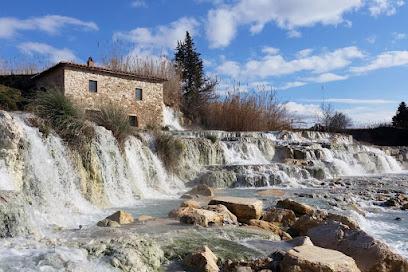
Duomo di Orvieto
Discover the astonishing beauty of Duomo di Orvieto, a Gothic cathedral brimming with art, history, and spiritual significance in the heart of Italy.

Pozzo di San Patrizio
Explore the stunning architectural marvel of Pozzo di San Patrizio, a historic well in Orvieto showcasing Renaissance engineering and breathtaking views.

Sacro Bosco
Discover the surreal beauty of Sacro Bosco, a unique park in Bomarzo, Italy, filled with whimsical sculptures and lush landscapes.

Piazza IV Novembre
Explore the historic beauty and vibrant culture of Piazza IV Novembre in Perugia, a must-see destination for any traveler in Italy.

Rocca Paolina
Discover the historical and cultural gem of Perugia, Rocca Paolina, a fortress that blends rich history with contemporary art in breathtaking surroundings.

Palazzo dei Papi di Viterbo
Explore the majestic Palazzo dei Papi di Viterbo, a historical landmark showcasing exquisite architecture and rich papal history in the heart of Italy.

Villa Farnese
Explore Villa Farnese in Caprarola, a breathtaking Renaissance villa filled with art, history, and stunning gardens, perfect for your Italian adventure.

Terme dei papi
Discover the healing waters and serene ambiance of Terme dei Papi, a luxurious thermal spa in the heart of Viterbo, Italy.
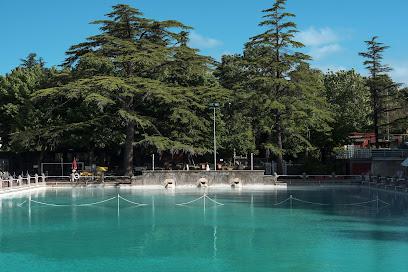
Terme San Filippo
Discover the healing waters and tranquil ambiance of Terme San Filippo, a stunning thermal bath retreat in the heart of Tuscany.

Villa Lante
Discover the enchanting beauty of Villa Lante, a Renaissance marvel in Bagnaia, featuring stunning gardens, historical significance, and artistic elegance.
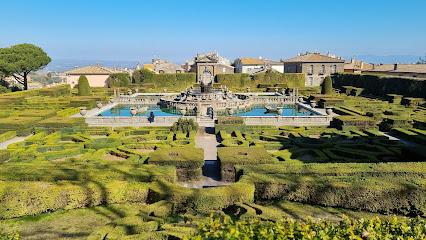
Rocca Monaldeschi della Cervara
Discover the history and breathtaking views at Rocca Monaldeschi della Cervara, a stunning fortress overlooking Lake Bolsena in Italy.
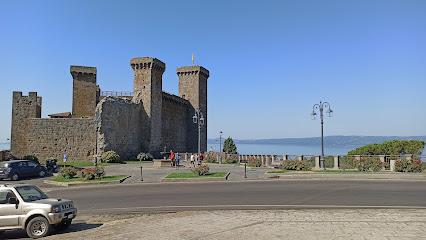
CASA DEL CIOCCOLATO PERUGINA Prenotazione Obbligatoria
Experience the magic of chocolate at Casa del Cioccolato Perugina, a captivating museum and factory in Perugia, Italy, where chocolate dreams come true.

Orvieto Underground
Explore the captivating Orvieto Underground, where ancient history and stunning architecture converge beneath the charming hilltop town.

Sanctuary of the Madonna di San Biagio
Discover the breathtaking Sanctuary of the Madonna di San Biagio, a serene Tuscan church steeped in history and architectural beauty.

Essential places to dine
Trattoria del Moro Aronne
Experience authentic Italian cuisine at Trattoria del Moro Aronne in Orvieto - where tradition meets flavor in every dish.

Trattoria la Palomba
Experience authentic Italian cuisine at Trattoria la Palomba in Orvieto – where every dish tells a story of tradition and flavor.

Osteria da Mamma Angela
Experience authentic Italian cuisine at Osteria da Mamma Angela in Orvieto – where tradition meets flavor in every dish.

Ristorante Il Giardino da Giovanni
Experience authentic Italian cuisine at Ristorante Il Giardino da Giovanni in Orvieto – where tradition meets taste.
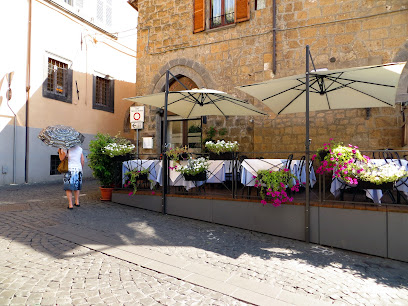
Mezza luna
Experience authentic Italian flavors at Mezza Luna in Orvieto – where every meal tells a story.

L'Oste del Re
Discover authentic Italian flavors at L'Oste del Re in Orvieto, where tradition meets exceptional culinary artistry.

La Buca di Bacco di Edy
Discover authentic Italian flavors at La Buca di Bacco di Edy in Orvieto – where every meal tells a story.

Ristorante Grotte del Funaro Nuova Tourist
Experience authentic Italian cuisine with stunning views at Ristorante Grotte del Funaro in beautiful Orvieto.

Il Malandrino Bistrot
Experience authentic Italian flavors at Il Malandrino Bistrot in Orvieto - where tradition meets taste.

Osteria del Grillo
Experience authentic Italian cuisine at Osteria del Grillo in Orvieto, where tradition meets taste in every dish.

La Pergola Orvieto
Discover authentic Italian flavors at La Pergola Orvieto - where tradition meets taste in a charming setting.

Antico Bucchero
Experience the best of authentic Italian dining at Antico Bucchero in Orvieto – where every meal tells a story.

Bottega del Mastro Norcino
Discover authentic Italian cuisine at Bottega del Mastro Norcino in Orvieto Scalo—where traditional flavors meet local charm.

Antica Bottega al Duomo
Experience authentic Italian cuisine at Antica Bottega al Duomo - a family-friendly haven in the heart of Orvieto.

Trattoria Pizzeria San Michele
Experience authentic Italian flavors at Trattoria Pizzeria San Michele in Orvieto - where every dish is crafted with passion and tradition.

Markets, malls and hidden boutiques
Il Negozietto
Experience the taste of Orvieto at Il Negozietto, where gourmet grocery meets authentic Italian sandwiches and cold cuts.

Il Mago di Oz
Explore the magic of handmade crafts and unique gifts at Il Mago di Oz, Orvieto's enchanting craft store perfect for souvenirs.
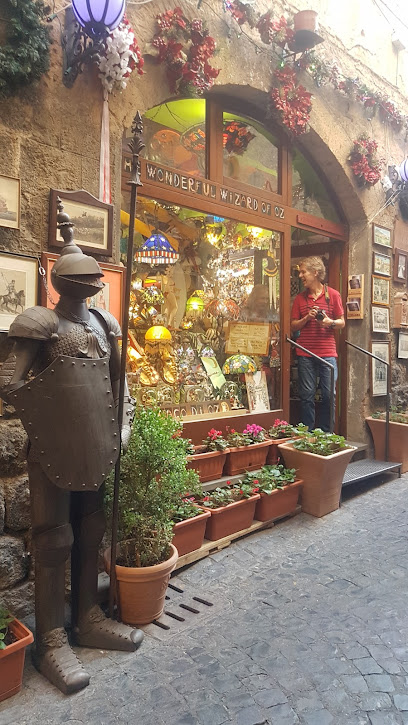
OROGAMI
Discover the exquisite craftsmanship of OROGAMI in Orvieto, where contemporary design meets traditional Italian artistry.

TOO Italy
Explore TOO Italy in Orvieto for unique women's fashion and accessories that celebrate local craftsmanship and Italian style.

Le Ore
Explore Le Ore in Orvieto for an exquisite selection of watches that blend luxury, craftsmanship, and timeless elegance.

Federico Badia
Discover exquisite handcrafted leather goods and shoes at Federico Badia in Orvieto, where Italian craftsmanship meets timeless style.
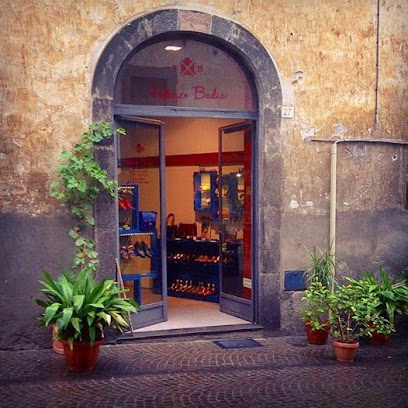
Gm abbigliamento
Explore Gm Abbigliamento in Orvieto for a unique blend of local craftsmanship and contemporary fashion, making it a shopping must for every tourist.

MILLA MO'
Explore MILLA MO' in Orvieto for exquisite women's clothing and accessories, where style, quality, and charm come together for a unique shopping experience.

Intimissimi
Discover the elegance of Italian fashion at Intimissimi in Orvieto, offering exquisite lingerie and stylish clothing for men and women.

Patris Orvieto
Explore Patris Orvieto for exquisite handcrafted olive wood items and immerse yourself in the vibrant culture of this historic Italian town.

La Corte dei Miracoli
Explore La Corte dei Miracoli, a captivating pottery store in Orvieto, showcasing exquisite handmade ceramics that reflect Italy's rich artistic heritage.

Polifemo Cuoio
Explore Polifemo Cuoio in Orvieto for exquisite handcrafted leather goods that celebrate Italian craftsmanship and tradition.
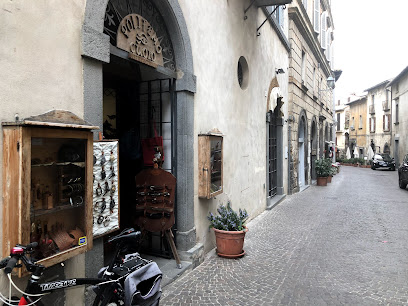
Arte del cuoio
Explore Arte del Cuoio in Orvieto for exquisite Italian leather craftsmanship, offering unique goods that embody tradition and quality.

Evisia.it - Store Orvieto Online
Evisia.it - Store Orvieto offers a stunning range of dresses that capture the essence of Italian fashion, perfect for your Orvieto adventure.

Bellocci E Fiazza Snc Di Bellocci Luigi E C.
Explore Bellocci E Fiazza in Orvieto, where exquisite handmade pottery reflects the beauty of Italian craftsmanship and local tradition.

Essential bars & hidden hideouts
FE3.0 ( FEBO)
Experience culinary innovation and local culture at FE3.0 (FEBO), where unique flavors and craft beers create an unforgettable dining adventure in Orvieto.

Bottega Vèra Orvieto
Experience the essence of Italian culture at Bottega Vèra Orvieto, where exquisite wines, artisanal cheeses, and cured meats await.

Bistrò Miranda Orvieto
Discover the culinary artistry and vibrant atmosphere at Bistrò Miranda, Orvieto's premier destination for food, wine, and live music.

Caffè Clandestino - Orvieto
Discover the charm of Caffè Clandestino in Orvieto, where authentic Italian coffee culture meets a cozy atmosphere.
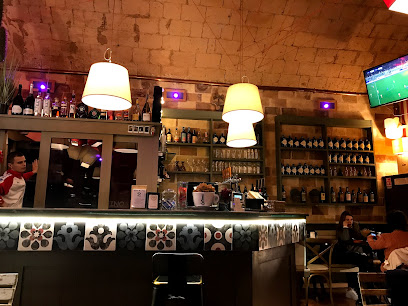
Blue Bar
Experience the authentic charm of Orvieto at Blue Bar, where local flavors and a vibrant atmosphere come together for an unforgettable visit.

Enoteca al Duomo
Discover the enchanting Enoteca al Duomo in Orvieto, where exquisite wines and delightful dishes meet in a picturesque setting.

Caffè Barrique
Discover the flavors of Italy at Caffè Barrique, a charming bistro and bar in Orvieto, offering delightful pizzas and local wines.

Cantina Foresi
Experience the heart of Orvieto at Cantina Foresi, where exquisite wines and local delicacies meet in a charming setting.

Bar Caffetteria Hescanas
Discover the charm of Bar Caffetteria Hescanas in Orvieto, offering delightful Italian coffee and treats in a picturesque piazza setting.

Vincaffé di Galanelli Stefano & C.
Unwind at Vincaffé di Galanelli Stefano & C., a charming wine bar in Orvieto offering exquisite local wines and a warm atmosphere.

Bar Caffetteria San Domenico
Experience the essence of Italian coffee culture at Bar Caffetteria San Domenico in Orvieto, where every sip tells a story.

Bar Da Brozzi
Experience authentic Italian café culture at Bar Da Brozzi in Orvieto, a perfect retreat for delightful pastries and local drinks.

Gocce
Gocce in Orvieto: An exquisite cocktail bar and bistro offering innovative drinks and delightful bites in a cozy, welcoming atmosphere.

Big Bar Di Burattino Ubaldini Siro
Experience the best of Orvieto at Big Bar Di Burattino Ubaldini Siro, where local wines and Italian hospitality come together in a charming setting.
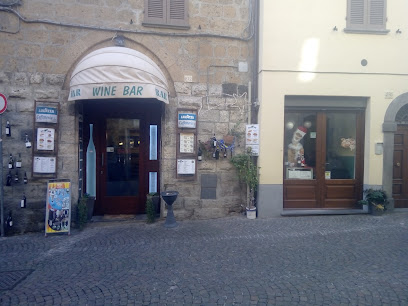
Bar Igloo Happy Food
Discover the charm of Orvieto Scalo at Bar Igloo Happy Food, where cozy ambiance meets delightful culinary offerings in the heart of Umbria.

Travel experiences inspired by this city
Explore more travel diariesLocal Phrases
-
- HelloCiao
[chow] - GoodbyeArrivederci
[ah-ree-veh-dehr-chee] - YesSì
[see] - NoNo
[noh] - Please/You're welcomePer favore/Prego
[pehr fah-voh-reh/preh-goh] - Thank youGrazie
[grah-tsyeh] - Excuse me/SorryScusa/Scusami
[skoo-sah/skoo-sah-mee] - How are you?Come stai?
[koh-meh stah-ee] - Fine. And you?Bene. E tu?
[beh-neh. eh too] - Do you speak English?Parli inglese?
[pahr-lee een-gleh-zeh] - I don't understandNon capisco
[nohn kah-pee-skoh]
- HelloCiao
-
- I'd like to see the menu, pleaseVorrei vedere il menù, per favore
[vohr-reh veh-deh-reh eel meh-noo, pehr fah-voh-reh] - I don't eat meatNon mangio carne
[nohn mahn-joh kahr-neh] - Cheers!Salute!
[sah-loo-teh] - I would like to pay, pleaseVorrei pagare, per favore
[vohr-reh pah-gah-reh, pehr fah-voh-reh]
- I'd like to see the menu, pleaseVorrei vedere il menù, per favore
-
- Help!Aiuto!
[ah-yoo-toh] - Go away!Vattene!
[vah-teh-neh] - Call the Police!Chiama la Polizia!
[kyah-mah lah poh-lee-tsyah] - Call a doctor!Chiama un dottore!
[kyah-mah oon doht-toh-reh] - I'm lostMi sono perso/a
[mee soh-noh pehr-soh/ah] - I'm illMi sento male
[mee sehn-toh mah-leh]
- Help!Aiuto!
-
- I'd like to buy...Vorrei comprare...
[vohr-reh kohm-prah-reh] - I'm just lookingSto solo guardando
[stoh soh-loh gwar-dahn-doh] - How much is it?Quanto costa?
[kwahn-toh koh-stah] - That's too expensiveÈ troppo caro
[eh troh-poh kah-roh] - Can you lower the price?Puoi abbassare il prezzo?
[pwah-ee ahb-bahs-sah-reh eel preh-tsoh]
- I'd like to buy...Vorrei comprare...
-
- What time is it?Che ora è?
[keh oh-rah eh] - It's one o'clockÈ l'una
[eh loo-nah] - Half past (10)Sono le dieci e mezza
[soh-noh leh dee-eh-chee eh meh-tsa] - MorningMattina
[maht-tee-nah] - AfternoonPomeriggio
[poh-meh-ree-joh] - EveningSera
[seh-rah] - YesterdayIeri
[yeh-ree] - TodayOggi
[oh-jee] - TomorrowDomani
[doh-mah-nee] - 1Uno
[oo-noh] - 2Due
[dweh] - 3Tre
[treh] - 4Quattro
[kwah-troh] - 5Cinque
[cheen-kweh] - 6Sei
[seh-ee] - 7Sette
[seht-teh] - 8Otto
[oh-toh] - 9Nove
[noh-veh] - 10Dieci
[dee-eh-chee]
- What time is it?Che ora è?
-
- Where's a/the...?Dov'è...?
[doh-veh] - What's the address?Qual è l'indirizzo?
[kwahl eh leen-dee-reet-soh] - Can you show me (on the map)?Puoi mostrarmi (sulla mappa)?
[pwah-ee mohs-trahr-mee (soo-lah mahp-pah)] - When's the next (bus)?Quando passa il prossimo (autobus)?
[kwahn-doh pahs-sah eel prohs-see-moh (ow-toh-boos)] - A ticket (to ....)Un biglietto (per ...)
[oon bee-lyet-toh (pehr)]
- Where's a/the...?Dov'è...?
History of Orvieto
-
Orvieto, known as Velzna in ancient times, was one of the major cities of the Etruscan civilization. The Etruscans, a sophisticated and mysterious people, established the city on a volcanic rock plateau for its strategic and defensive advantages. Evidence of their advanced engineering skills can still be seen in the remnants of ancient walls, tunnels, and necropolises like the Crocifisso del Tufo.
-
In the 3rd century BCE, the Romans conquered Orvieto, integrating it into the Roman Republic. The city, renamed Volsinii Novi, became an important center of Roman administration and culture. The construction of roads and aqueducts during this period significantly enhanced its connectivity and infrastructure.
-
During the Middle Ages, Orvieto flourished as a prosperous and independent commune. It became a prominent political and religious center, with the construction of the stunning Orvieto Cathedral (Duomo) beginning in 1290. This Gothic masterpiece, designed by architect Lorenzo Maitani, is renowned for its intricate façade and captivating frescoes by Luca Signorelli.
-
In the 13th and 14th centuries, Orvieto served as a refuge for several Popes during times of political turmoil in Rome. The city hosted the papal court and was the site where Pope Urban IV instituted the Feast of Corpus Christi in 1264. The Papal Palace (Palazzo Papale) from this era still stands as a testament to its ecclesiastical significance.
-
Orvieto experienced a cultural and architectural renaissance in the 15th and 16th centuries. It saw the addition of many palaces, churches, and public buildings. The city continued to be an important regional power until the unification of Italy in the 19th century, which marked the end of its political autonomy and the beginning of its integration into the newly established Kingdom of Italy.
-
In the 20th century, Orvieto embraced tourism as a means of preserving its rich historical and cultural heritage. Efforts to restore and maintain its ancient structures have been ongoing, making it a captivating destination for history enthusiasts and travelers. Today, Orvieto is known for its well-preserved medieval architecture, vibrant cultural festivals, and its renowned white wine, Orvieto Classico.
Orvieto Essentials
-
Orvieto is located in the Umbria region of central Italy. The nearest major international airport is Leonardo da Vinci International Airport (Fiumicino) in Rome, approximately 130 kilometers away. From Rome, you can take a direct train from Roma Termini station to Orvieto, which takes about 1 to 1.5 hours. Alternatively, you can rent a car and drive, which takes roughly 1.5 hours via the A1 motorway.
-
Orvieto is a compact town, and many of its attractions are within walking distance. The town has a funicular railway that connects the train station at the base of the hill to the old town at the top. Local buses are available for getting around the town and to nearby villages. Taxis are also readily available. If you plan to explore the surrounding region, renting a car can be convenient.
-
The official currency in Italy is the Euro (EUR). Credit cards are widely accepted in hotels, restaurants, and shops in Orvieto. However, it is advisable to carry some cash for smaller establishments and markets. ATMs are readily available throughout the town where you can withdraw euros.
-
Orvieto is generally a safe destination for tourists. However, like any travel destination, it is advisable to take standard precautions. Avoid walking alone at night in unfamiliar areas and keep an eye on your belongings in crowded places. There are no specific high-crime areas targeting tourists, but staying vigilant and aware of your surroundings is always best.
-
In case of emergency, dial 112 for immediate assistance, which is the general emergency number in Italy. The local police station and medical facilities are available in Orvieto. It is recommended to have travel insurance that covers medical emergencies. Pharmacies are available in the town for minor health issues and over-the-counter medications.
-
Fashion: Do dress modestly, especially when visiting religious sites. Avoid wearing overly revealing clothing. Religion: Do respect local customs and traditions. Always cover your shoulders and knees when entering churches. Public Transport: Do be respectful and give up your seat to elderly passengers. Don't eat or drink on public transport. Greetings: Do greet people with a smile and a 'Buongiorno' (Good morning) or 'Buonasera' (Good evening). A handshake is common. Eating & Drinking: Do try local delicacies and accept food offerings graciously. Don't rush through your meal; dining is a leisurely affair in Italy.
-
To experience Orvieto like a local, visit the weekly market held every Thursday and Saturday morning near Piazza del Popolo, where you can buy fresh produce and local goods. Engage with locals at small cafes and trattorias, as they are often friendly and willing to share stories about the town's history and culture. Don't miss the chance to explore the underground caves and tunnels of Orvieto, which offer a unique glimpse into the town's ancient past. Also, try the local white wine, Orvieto Classico, which is a regional specialty.
Trending Landmark in Orvieto
-
Duomo di Orvieto
-
Pozzo di San Patrizio
-
Well of St. Patrick
-
Orvieto Underground
-
Pozzo della Cava
-
Ristorante Grotte del Funaro Nuova Tourist
-
Torre del Moro Orvieto
-
Orvieto Centro
-
Labirinto Di Adriano
-
Chiesa di Sant'Andrea
-
Altarocca Wine Resort
-
Palazzo Del Capitano Del Popolo
-
Funicolare di Orvieto - Scalo
-
Duca di Orvieto
-
La Badia di Orvieto
Nearby Cities to Orvieto
-
Things To Do in Perugia
-
Things To Do in Montepulciano
-
Things To Do in Assisi
-
Things To Do in Arezzo
-
Things To Do in Siena
-
Things To Do in Vatican Museums
-
Things To Do in Gregorian Etruscan Museum
-
Things To Do in Vatican Pinacoteca
-
Things To Do in Vatican Gardens
-
Things To Do in Apostolic Palace
-
Things To Do in Sistine Chapel
-
Things To Do in St. Peter's Basilica
-
Things To Do in Vatican Necropolis
-
Things To Do in St. Peter's Square
-
Things To Do in Rome





















